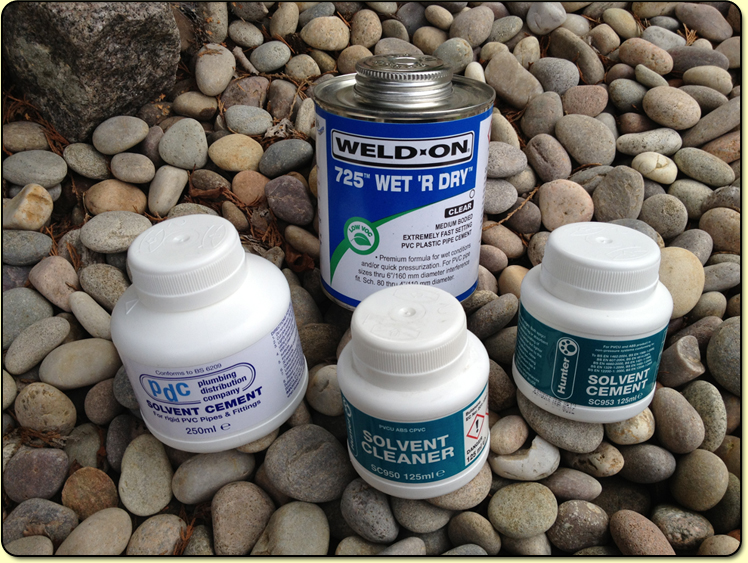PVC (Polyvinyl Chloride) is a ubiquitous material in various industries, known for its durability, versatility, and affordability. Whether you’re a DIY enthusiast or a professional tradesperson, mastering the art of PVC bonding is essential for successful plumbing, construction, and other projects. In this comprehensive guide, we’ll explore everything you need to know about PVC cement and cleaner, from understanding the basics to mastering advanced techniques.
Understanding PVC Bonding
The Importance of PVC Bonding
PVC bonding involves joining PVC pipes, fittings, and other components to create strong and leak-proof connections. Proper bonding ensures structural integrity, prevents leaks, and prolongs the lifespan of PVC installations.
Chemistry Behind PVC Bonding
PVC cement, also known as solvent cement, works by chemically softening the surfaces of PVC materials, allowing them to fuse together when pressure is applied. The cleaner removes contaminants from the surfaces, ensuring a clean and smooth bond.
Types of PVC Cement and Cleaner
Regular PVC Cement
Regular PVC cement is suitable for most PVC applications and offers a strong and reliable bond. It is available in various formulations to suit different environmental conditions and application requirements.
Heavy-Duty PVC Cement
For demanding applications or extreme conditions, heavy-duty PVC cement provides enhanced bonding strength and durability. It is ideal for underground installations, high-pressure systems, and harsh environments.
Primer Cleaner
Primer cleaner is specifically formulated to prepare PVC surfaces for bonding by removing dirt, grease, and other contaminants. It enhances the adhesion of PVC cement and ensures a secure bond.
Multi-Purpose Cleaner
Multi-purpose cleaner offers versatility for various cleaning tasks, including preparing PVC surfaces for bonding. It can also be used to clean tools, equipment, and work surfaces.
Preparation and Application Techniques
Surface Preparation
Proper surface preparation is crucial for successful PVC bonding. Begin by cutting the PVC pipes and fittings to the required lengths using a PVC cutter or saw. Ensure clean, square cuts to facilitate a tight and secure bond.
Cleaning Process
After cutting the PVC components, use a primer cleaner or multi-purpose cleaner to thoroughly clean the surfaces to be bonded. Remove any dirt, grease, or debris that could impair bonding, and allow the surfaces to dry completely before applying PVC cement.
Application of PVC Cement
Apply a liberal coat of PVC cement to both the pipe and fitting using a brush or applicator. Ensure full coverage of the bonding surfaces, but avoid applying too much cement, as excess adhesive can create messy drips and weaken the bond.
Joining the Components
Immediately after applying the PVC cement, insert the pipe into the fitting, giving it a quarter turn to evenly distribute the adhesive. Hold the components together firmly for a few seconds to allow the bond to set. Avoid disturbing the joint until the cement has fully cured to ensure a strong and reliable connection.
Advanced Bonding Techniques
Socket Fusion Welding
Socket fusion welding is a method commonly used for joining smaller diameter PVC pipes and fittings. It involves heating the mating surfaces to a specific temperature and then pressing them together to create a fusion bond.
Hot Air Welding
Hot air welding, also known as heat welding or plastic welding, is used for joining large diameter PVC pipes and fittings. It involves heating the surfaces to be bonded using a hot air gun and then pressing them together to create a fusion bond.
Mechanical Fastening
In addition to adhesive bonding methods, mechanical fastening techniques such as screws, bolts, and clamps can be used to secure PVC components. This method is particularly useful for applications where disassembly may be required.
Conclusion
Mastering the art of PVC bonding is essential for achieving strong, reliable, and leak-proof connections in plumbing, construction, and other applications. By understanding the properties of PVC cement and cleaner, selecting the right products, and employing proper preparation and application techniques, you can ensure the success of your PVC bonding projects. With this comprehensive guide as your resource, you’ll be well-equipped to tackle any PVC bonding challenge with confidence and precision.
